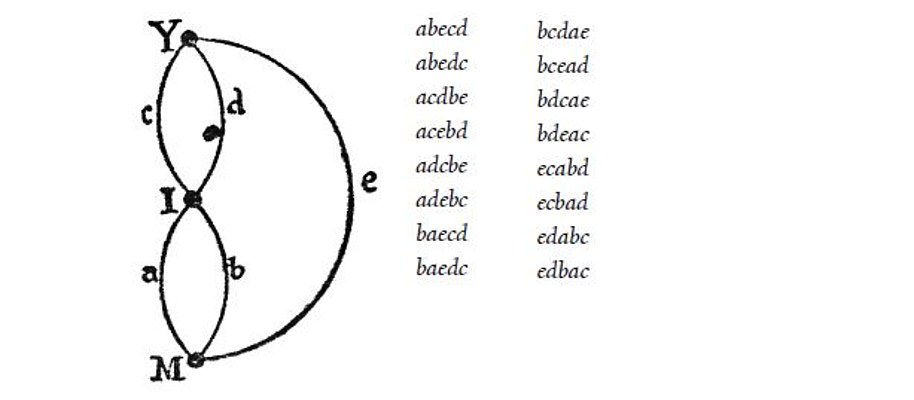Below you will see a rough plan of a river with an island and five bridges. On one side of the river is a monastery, and on the other side is a monk in the foreground.
Now, the monk has decided that he will cross every bridge once, and only once, on his return to the monastery.
This is, of course, quite easy to do, but on the way he thought to himself, 'I wonder how many different routes there are from which I might have selected.'
Could you have told him?

Solution to the Problem:
There are sixteen routes from which the monk could pick.The problem of the bridges may be reduced to the simple diagram shown in the illustration. The point M represents the Monk, the point I the Island, and the point Y the Monastery.
Now the only direct ways from M to I are by the bridges a and b; the only direct ways from I to Y are by the bridges c and d; and there is a direct way from M to Y by the bridge e.
Now, what we have to do is to count all the routes that will lead from M to Y, passing over all the bridges, a, b, c, d, and e once and once only.
With the diagram it is quite easy to count these routes methodically.
Thus, starting from a, b, we find there are only two ways of completing the route; with a, c, there are only two routes; with a, d, only two routes; and so on. It will be found that there are sixteen such routes in all, as in the following list:

Correctly solved by:
| 1. James Alarie | Flint, Michigan |
| 2. Brijesh Dave | Mumbai City, Maharashtra, India |
| 3. Rob Miles | Northbrook, Illinois |
| 4. Ivy Joseph | Pune, Maharashtra, India |
| 5. Garima Mandwani | Pune, Maharashtra, India |